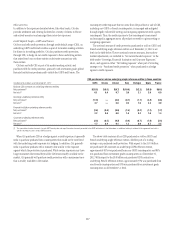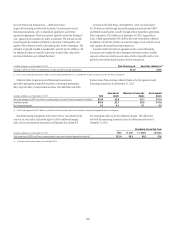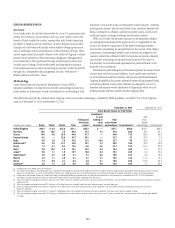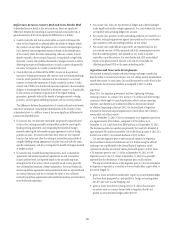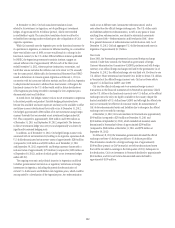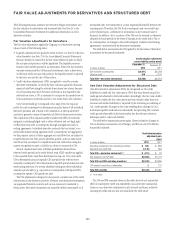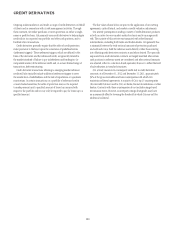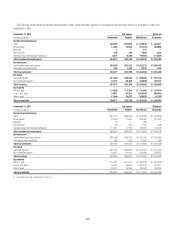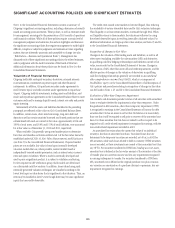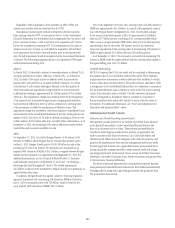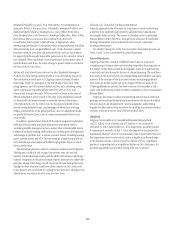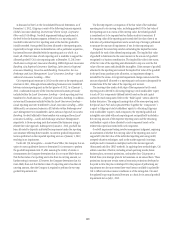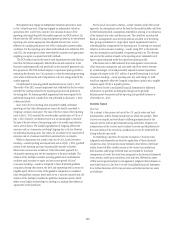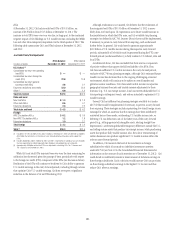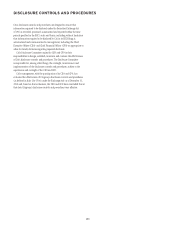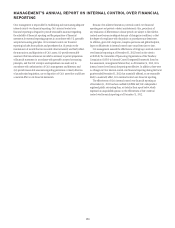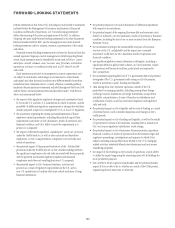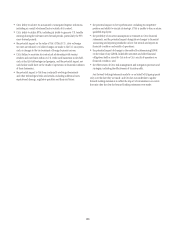Citibank 2012 Annual Report Download - page 148
Download and view the complete annual report
Please find page 148 of the 2012 Citibank annual report below. You can navigate through the pages in the report by either clicking on the pages listed below, or by using the keyword search tool below to find specific information within the annual report.126
SIGNIFICANT ACCOUNTING POLICIES AND SIGNIFICANT ESTIMATES
Note 1 to the Consolidated Financial Statements contains a summary of
Citigroup’s significant accounting policies, including a discussion of recently
issued accounting pronouncements. These policies, as well as estimates made
by management, are integral to the presentation of Citi’s results of operations
and financial condition. While all of these policies require a certain level of
management judgment and estimates, this section highlights and discusses
the significant accounting policies that require management to make highly
difficult, complex or subjective judgments and estimates at times regarding
matters that are inherently uncertain and susceptible to change (see also
“Risk Factors—Business and Operational Risks”). Management has
discussed each of these significant accounting policies, the related estimates,
and its judgments with the Audit Committee of the Board of Directors.
Additional information about these policies can be found in Note 1 to the
Consolidated Financial Statements.
Valuations of Financial Instruments
Citigroup holds debt and equity securities, derivatives, retained interests
in securitizations, investments in private equity and other financial
instruments. In addition, Citi purchases securities under agreements to
resell (reverse repos) and sells securities under agreements to repurchase
(repos). Citigroup holds its investments, trading assets and liabilities, and
resale and repurchase agreements on the Consolidated Balance Sheet to meet
customer needs and to manage liquidity needs, interest rate risks and private
equity investing.
Substantially all of the assets and liabilities described in the preceding
paragraph are reflected at fair value on Citi’s Consolidated Balance Sheet.
In addition, certain loans, short-term borrowings, long-term debt and
deposits as well as certain securities borrowed and loaned positions that are
collateralized with cash are carried at fair value. Approximately 42.6% and
38.9% of total assets, and 16.0% and 15.0% of total liabilities, were accounted
for at fair value as of December 31, 2012 and 2011, respectively.
When available, Citi generally uses quoted market prices to determine
fair value and classifies such items within Level 1 of the fair value hierarchy
established under ASC 820-10, Fair Value Measurements and Disclosures
(see Note 25 to the Consolidated Financial Statements). If quoted market
prices are not available, fair value is based upon internally developed
valuation models that use, where possible, current market-based or
independently sourced market parameters, such as interest rates, currency
rates and option volatilities. Where a model is internally developed and
used to price a significant product, it is subject to validation and testing
by Citi’s separate model verification group. Such models are often based
on a discounted cash flow analysis. In addition, items valued using such
internally generated valuation techniques are classified according to the
lowest level input or value driver that is significant to the valuation. Thus, an
item may be classified in Level 3 even though there may be some significant
inputs that are readily observable.
The credit crisis caused some markets to become illiquid, thus reducing
the availability of certain observable data used by Citi’s valuation techniques.
This illiquidity, in at least certain markets, continued through 2012. When
or if liquidity returns to these markets, the valuations will revert to using
the related observable inputs in verifying internally calculated values. For
additional information on Citigroup’s fair value analysis, see Notes 25 and 26
to the Consolidated Financial Statements.
Recognition of Changes in Fair Value
Changes in the valuation of the trading assets and liabilities, as well as all
other assets (excluding available-for-sale securities (AFS) and derivatives
in qualifying cash flow hedging relationships) and liabilities carried at fair
value, are recorded in the Consolidated Statement of Income. Changes in
the valuation of AFS, other than write-offs and credit impairments, and the
effective portion of changes in the valuation of derivatives in qualifying
cash flow hedging relationships generally are recorded in Accumulated
other comprehensive income (loss) (AOCI), which is a component of
Stockholders’ equity on the Consolidated Balance Sheet. A full description of
Citi’s policies and procedures relating to recognition of changes in fair value
can be found in Notes 1, 25 and 26 to the Consolidated Financial Statements.
Evaluation of Other-than-Temporary Impairment
Citi conducts and documents periodic reviews of all securities with unrealized
losses to evaluate whether the impairment is other-than-temporary. Under
the guidance for debt securities, other-than-temporary impairment (OTTI)
is recognized in earnings in the Consolidated Statement of Income for debt
securities that Citi has an intent to sell or that Citi believes it is more-likely-
than-not that it will be required to sell prior to recovery of the amortized cost
basis. For those securities that Citi does not intend to sell nor expect to be
required to sell, credit-related impairment is recognized in earnings, with the
non-credit-related impairment recorded in AOCI.
An unrealized loss exists when the current fair value of an individual
security is less than its amortized cost basis. Unrealized losses that are
determined to be temporary in nature are recorded, net of tax, in AOCI for
AFS securities, while such losses related to held-to-maturity (HTM) securities
are not recorded, as these investments are carried at their amortized cost (less
any OTTI). For securities transferred to HTM from Trading account assets,
amortized cost is defined as the fair value amount of the securities at the date
of transfer plus any accretion income and less any impairments recognized
in earnings subsequent to transfer. For securities transferred to HTM from
AFS, amortized cost is defined as the original purchase cost, plus or minus
any accretion or amortization of a purchase discount or premium, less any
impairment recognized in earnings.



